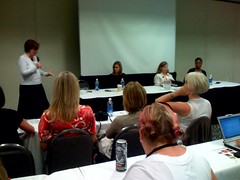Nice piece from Wired: Slap in the Facebook: It’s Time For Social Networks To Open Up
The key part of the article, and one that seems to be the focus of a number of other recent writings, such as Brad Fitzpatrick and David Recordon’s "Thoughts on the Social Graph," is the explicit exposition of the relationships between the individuals in the network.
In the Wired article, Scott Gilbertson writes:
"The web still lacks a generalized way to convey relationships between
people’s identities on the internet. The absence of this secret sauce
— an underlying framework that connects "friends" and establishes
trust relationships between peers — is what gave rise to social
networks in the first place. While we’ve largely outgrown the
limitations of closed platforms (take e-mail or the web itself), no one
has stepped forward with an open solution to managing your friends on
the internet at large."
I agree with Gilbertson’s statement, as well as Fitzpatrick’s call to "make the social graph [ed. – in other words, the information on relationship connections and their types] a community asset." This means that there is a call for an open, interoperable infrastructure to communicate "friend" relationships for public statements of connection.
This is another piece of the puzzle that is being put together with respect to managing one’s own information, for example in the case of the "red dot" personal data store in the VRM discussion. Just like all other pieces of our personal information as customers / individuals, we should be able to manage this relationship information as we see fit, and not have it be yet another asset of ours that is wrested from us and stored in vendor silos.
The conversations linked above are a good start. But they only go part of the way. (Yes, we do need to crawl before we can walk before we can run, but we also need to keep an eye on the longer view.) Three other key questions that need to be kept in mind are the following:
1) How do we separate "public" statements of relationship, from those we wish to keep private, or only share with certain classes of other contacts?
2) More importantly, how do we universally store not only information about our relationships, but also that profile information about ourselves?
3) Similar to (1), how do we also share our personal information on a trusted basis?
These are the early, pioneering days of these discussions. Looking forward to connecting with lots of folks on this, and continuing to work on creating answers that work for everyone – both customers and vendors.
N.B. Cerado Haystack is committed to openness on many levels








